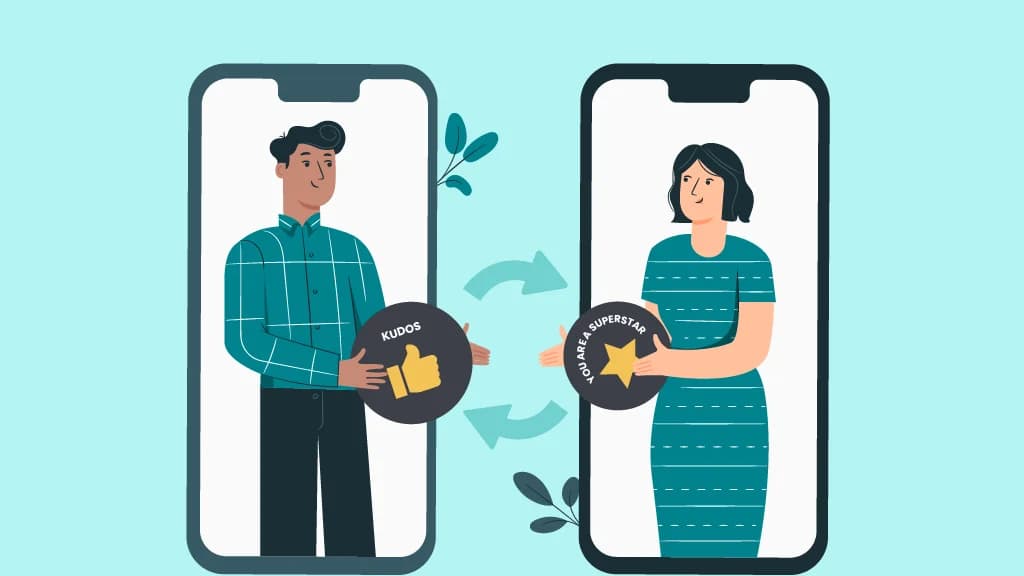Non-Monetary Rewards: A Complete Guide to Boost Employee Engagement

Kartikay Kashyap
October 14, 2025

In today’s workplace, employees want more than just a paycheck. While salary and bonuses are important, non-monetary rewards, which focus on wellbeing, recognition, and growth, can have a bigger and longer-lasting impact on engagement, loyalty, and productivity.
This guide will help you understand what non-monetary rewards are, why they matter, real-life examples, challenges, and actionable steps to implement them effectively.
What Are Non-Monetary Rewards?
Non-monetary rewards are any incentives that do not involve direct financial compensation. They focus on employee satisfaction, professional development, and work-life balance.
Some common examples include:
Flexible work schedules or hybrid work policies
Professional growth opportunities like mentorship or online courses
Wellness initiatives such as yoga, meditation, or in-office gyms
Recognition programs like employee of the month or peer shoutouts
Family-friendly policies such as paternity or maternity leave
Unlike bonuses, these rewards show that your company cares about employees as people, not just workers.
Benefits of Non-Monetary Rewards
Non-monetary rewards bring tangible advantages for both employees and organizations:
Boost Employee Engagement – Employees feel valued and motivated.
Improve Retention – Recognition and growth opportunities encourage loyalty.
Encourage Innovation – Flexibility and wellbeing initiatives reduce stress and allow creative thinking.
Enhance Work-Life Balance – Policies like flexible hours and wellness programs help employees manage personal commitments.
Even small gestures, like offering a free lunch after extra hours or providing ergonomic chairs, can make employees feel appreciated and cared for.
Challenges to Keep in Mind
Implementing non-monetary rewards is not without hurdles:
Employee Preferences Vary – Not everyone values the same perks.
Consistency Matters – Rewards need to be applied fairly across teams.
Cultural Alignment – Some perks may not fit your company culture or operations.
Measuring Impact – Tracking the results of non-monetary rewards can be challenging.
Being aware of these challenges helps you design a program that is meaningful, fair, and sustainable.
Non-Monetary Reward Examples That Work
Here are some perks that make a real difference without huge costs:
Flexible Work Options – Hybrid work or adjustable hours to support personal life.
Professional Growth Opportunities – Mentorship programs, workshops, or online courses.
Wellness Initiatives – Yoga, meditation, fitness memberships, or in-office wellness rooms.
Recognition Programs – Peer-to-peer awards or shoutouts to celebrate achievements.
Family-Friendly Policies – Paternity or maternity leave or flexible leave options.
These perks not only enhance morale but also strengthen loyalty, productivity, and innovation.
Steps to Implement a Non-Monetary Rewards Program
Understand Employee Needs – Survey your team to know which perks matter most.
Define Goals – Decide whether you want to boost engagement, retention, or wellbeing.
Start Small – Implement perks that are easy to introduce and track.
Communicate Clearly – Make sure employees know about the rewards and how to access them.
Evaluate and Adjust – Gather feedback and modify the program to keep it relevant.
Conclusion
Non-monetary rewards are more than perks. They are a reflection of your company culture. When implemented thoughtfully, they boost engagement, retention, and performance while showing employees that they matter beyond their paycheck.
Even small initiatives, like a wellness session or recognition program, can make a huge difference. The key is to combine empathy, trust, and practical support to create a workplace where employees thrive.





